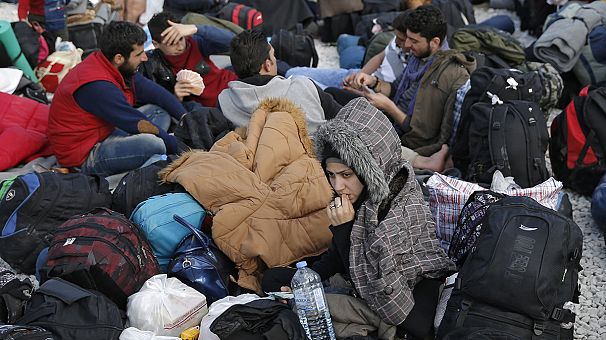House chairman: Military files, emails deleted amid probe
WASHINGTON (AP)— Personnel at U.S. Central Command have deleted files and emails amid allegations that intelligence assessments were altered to exaggerate progress against Islamic State militants, the chairman of the House Intelligence Committee said Thursday.
“We have been made aware that both files and emails have been deleted by personnel at CENTCOM and we expect that the Department of Defense will provide these and all other relevant documents to the committee,” Rep. Devin Nunes said at a hearing on worldwide threats facing the United States. Central Command oversees U.S. military activities in the Middle East.
A whistleblower whose position was not disclosed told the committee that material was deleted, according to a committee staff member who spoke on condition of anonymity because he was not authorized to publicly disclose the information.
Navy Cmdr. Kyle Raines, a spokesman for CENTCOM, said the combatant command was fully cooperating with the Defense Department inspector general’s probe into the allegations.
“While it would be inappropriate to discuss the details of that investigation, I can tell you that as a matter of CENTCOM policy, all senior leader emails are kept in storage for record-keeping purposes, so such records cannot be deleted,” Raines said. It’s unclear if emails written by lower-level staff were also maintained.
Nunes, R-Calif., also said the Office of the Director of National Intelligence briefed the committee on a survey indicating that more than 40 percent of Central Command analysts believe there are problems with the integrity of the intelligence analyses and process.
“To me, it seems like 40 percent of analysts who are concerned at CENTCOM — that’s just something that can’t be ignored,” Nunes said.
A senior intelligence official said that each year the DNI conducts a survey at all 17 U.S. intelligence agencies to gain feedback on the integrity, standards and objectivity of the process used to analyze intelligence. In the most recent survey, conducted between August and October of last year, approximately 120 employees from CENTCOM responded to the survey. The official spoke on condition of anonymity to disclose details of the internal survey.
A report on the survey issued in December 2015 indicated that 40 percent of those who responded at CENTCOM answered “yes” to the question: “During the past year, do you believe that anyone attempted to distort or suppress analysis on which you were working in the face of persuasive evidence?”
Asked whether he considered 40 percent an unusually high number, Lt. Gen. Vincent Stewart, director of the Defense Intelligence Agency, told the committee that he did.
Stewart said that while it would be favorable for all to “get closure on exactly the extent of this allegation,” he cannot control the pace of the watchdog’s investigation. He said that while the investigation proceeds, intelligence officials continue to look into ways to improve the process of producing the assessments, and he noted that the DIA’s ombudsman had looked into a particular incident.
The New York Times, which first disclosed the investigation, reported that the probe began after at least one civilian DIA analyst told authorities he had evidence that officials at Central Command were improperly reworking conclusions of assessments prepared for President Barack Obama and other top policymakers.
*** So this begs the question, what is the truth today on Islamic State, on Russia, Syria, North Korea, China, Iran or the thousands of terror groups? What is the final product including today with briefings? What does the media receive other than filtered reports? Who really DID order this suppression of intelligence data? Who is going to be the fall person? What was shared with foreign intelligence through normal daily collaboration?



